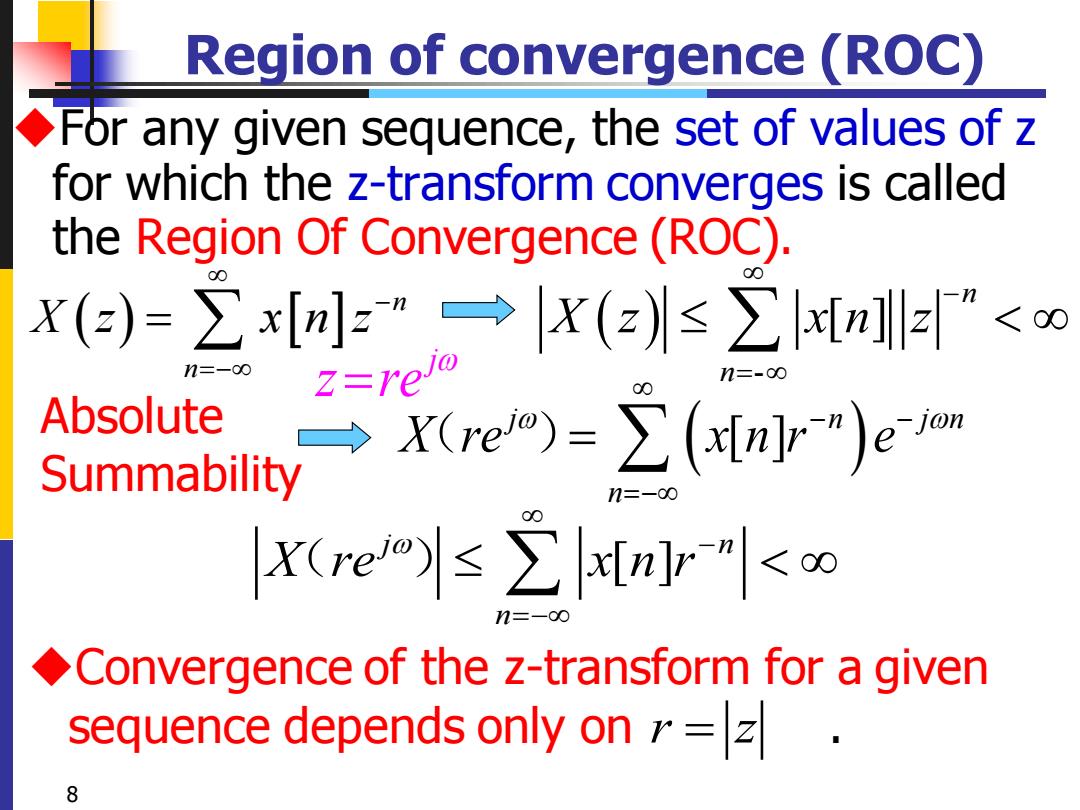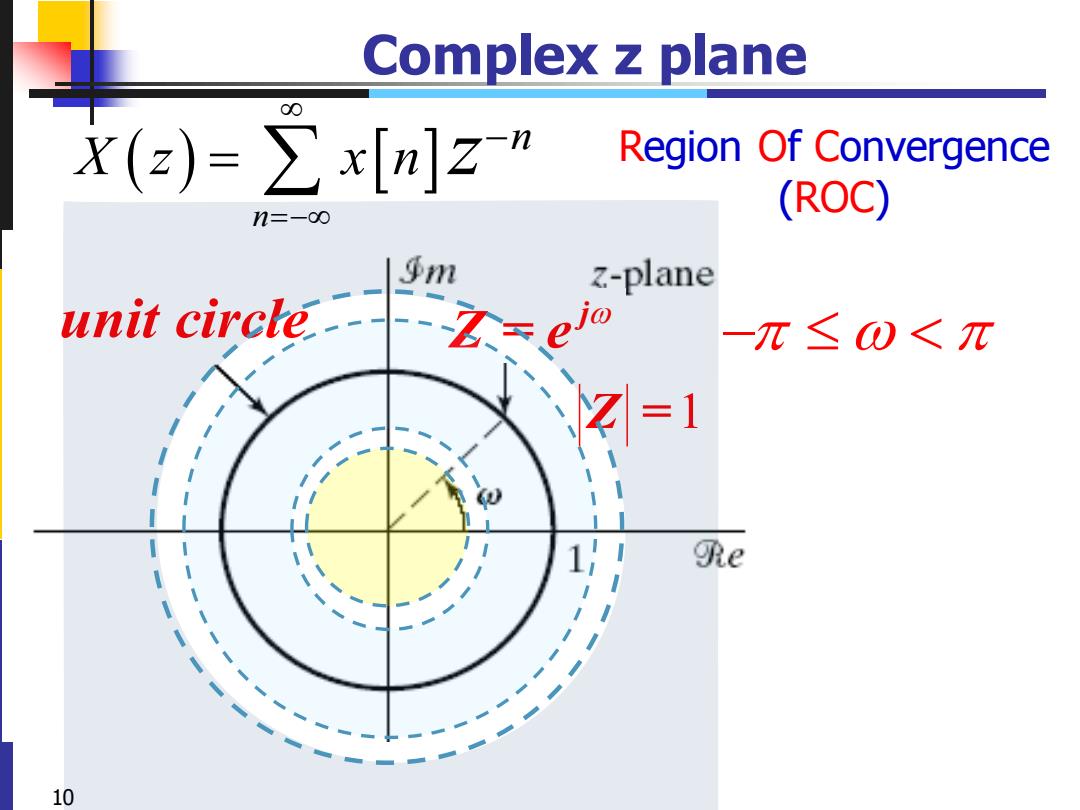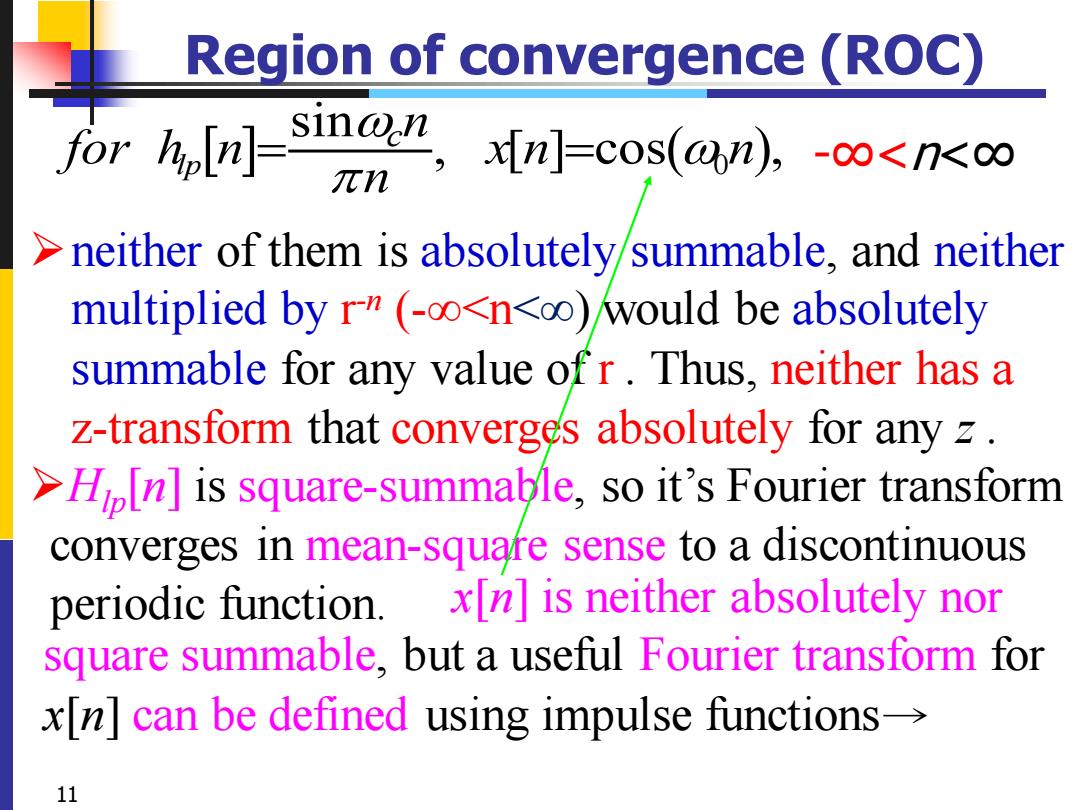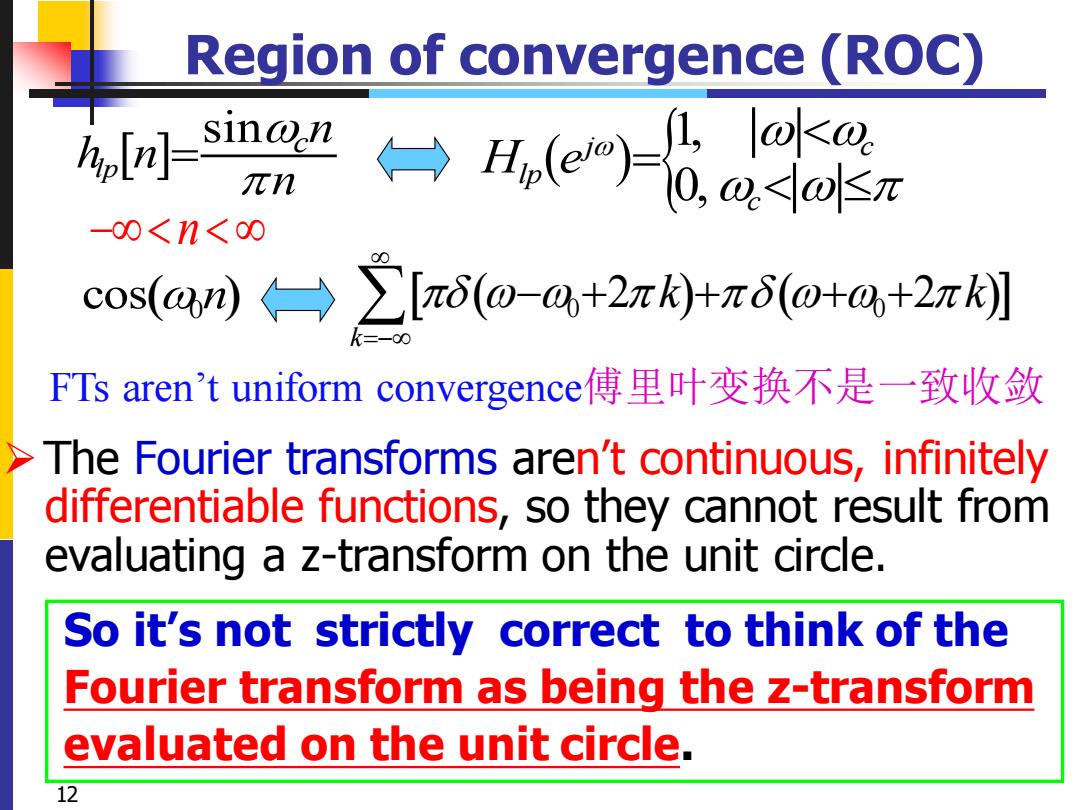
Region of convergence (ROC) For any given sequence,the set of values of z for which the z-transform converges is called the Region Of Convergence(ROC). X(z)=∑x[nz"→x(z≤∑[n]lz”. n=-00 z=re n=-00 Absolute Summability X(eo)=∑([n-")eom 1n二-00 X(re∑[n]r<∞ n=-00 Convergence of the z-transform for a given sequence depends only on r=z 8
8 Region of convergence (ROC) ◆For any given sequence, the set of values of z for which the z-transform converges is called the Region Of Convergence (ROC). ( ) n n X z x n z − =− = [ ] j n n X re x n r − =− ( ) ( ) [ ] n n X z x n z − = - j z re = Absolute Summability ( [ ] ) j n j n n X re x n r e − − =− ( )= r z = ◆Convergence of the z-transform for a given sequence depends only on

Region of convergence (ROC) X(z≤∑x[n]lz"<o, z=rew n=-00 Convergence of the z-transform for a given sequence depends only on r=z z-plane if some value of z,say, unit circle Z =Z1,is in the ROC, then all values of z on the circle defined by =zil 欧e will also be in the ROC. 傅里叶变换一致收敛uniform convergence 设z=|z1=1 在收敛域内 if ROC includes unit circle,then Fourier transform and all its derivatives with respect to must be continuous functions of
z1 if some value of z, say, z =z1 , is in the ROC, then all values of z on the circle defined by |z|=|z1 | will also be in the ROC. if ROC includes unit circle, then Fourier transform and all its derivatives with respect to must be continuous functions of . ( ) , - n n X z x n z − = ◆Convergence of the z-transform for a given sequence depends only on r z = . Region of convergence (ROC) j z re = 傅里叶变换一致收敛uniform convergence 9 设|z|=|z1 |=1 在收敛域内 unit circle

Complex z plane 00 X(z)=∑x[n]zn Region Of Convergence n=-o0 (ROC) 乎m Z-plane unit circle --Z< ejo -π≤0<π =1 1 e 10
10 Complex z plane ( ) =− − = n n X z x n z j unit circle Z = e − Z =1 Region Of Convergence (ROC)

Region of convergence (ROC) drk,[]-i,a小-co@wnho<n∞ >neither of them is absolutely summable,and neither multiplied by r"(-oo<n<oo)would be absolutely summable for any value ofr.Thus,neither has a z-transform that converges absolutely for any z. >HIp[n]is square-summable,so it's Fourier transform converges in mean-square sense to a discontinuous periodic function. x[n]is neither absolutely nor square summable,but a useful Fourier transform for x[n]can be defined using impulse functions-> 11
11 Region of convergence (ROC) ( 0 ) sin , [ ] cos , lp c n for h n x n n n = = ➢neither of them is absolutely summable, and neither multiplied by r -n (-∞<n<∞) would be absolutely summable for any value of r . Thus, neither has a z-transform that converges absolutely for any z . ➢Hlp[n] is square-summable, so it’s Fourier transform converges in mean-square sense to a discontinuous periodic function. -∞<n<∞ x[n] is neither absolutely nor square summable, but a useful Fourier transform for x[n] can be defined using impulse functions→

Region of convergence (ROC) sino.n πn →以etag -00<n<0 cos(aw)→∑[π(o-@a+2r)+π6(@+a+2πk] FTs aren't uniform convergence傅里叶变换不是一致收敛 The Fourier transforms aren't continuous,infinitely differentiable functions,so they cannot result from evaluating a z-transform on the unit circle. So it's not strictly correct to think of the Fourier transform as being the z-transform evaluated on the unit circle. 12
12 Region of convergence (ROC) ➢The Fourier transforms aren’t continuous, infinitely differentiable functions, so they cannot result from evaluating a z-transform on the unit circle. cos(0 n) ( 0 0 2 2 ) ( ) k k k =− − + + + + So it’s not strictly correct to think of the Fourier transform as being the z-transform evaluated on the unit circle. FTs aren’t uniform convergence傅里叶变换不是一致收敛 − n sin lp c n h n n = ( ) 1, 0, j c lp c H e =